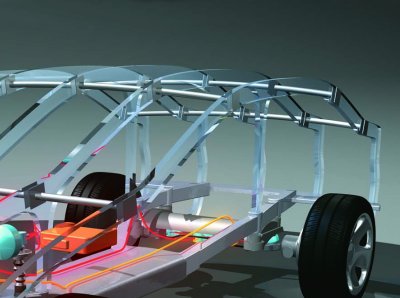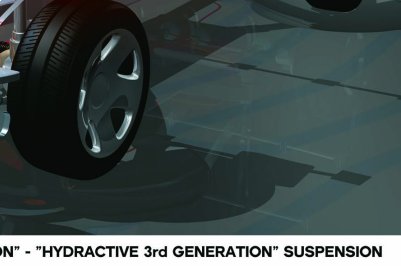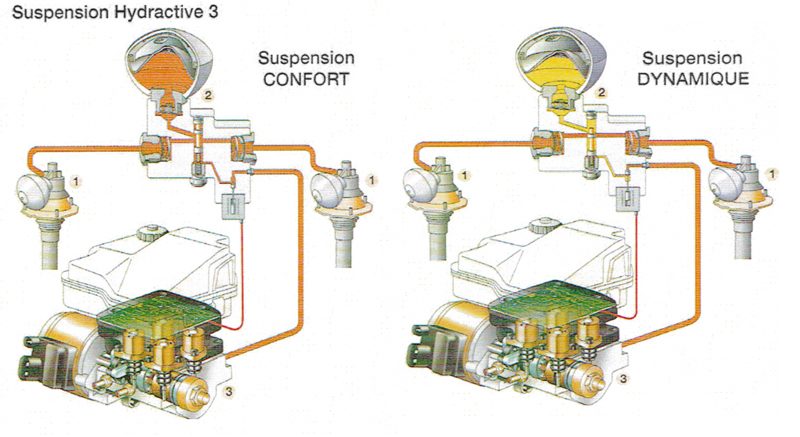|
||||||||||||||||||||||
|
|
|
Hydractive 3 |
|
|
At the Geneva Motor Show in March 2000, Citroën announced details of the new Hydractive 3 suspension system which has subsequently been fitted to the Mk1 C5, the top of the range C6 and the current C5. |
|
 |
 |
 |
 |
|
The third-Generation Hydractive system adapts automatically, instantly and continuously to both the occupant's driving style and to the state of the road. The system adapts damping force and flexibility through its two settings: comfort suspension and dynamic suspension. Each axle is equipped with a third sphere and a stiffness regulator. The operating principle of the hydractive system is to isolate the third sphere in dynamic mode or to bring it into service in comfort mode. To do this, the system receives data from the height sensor and steering wheel sensor and also from the multiplexed network, which supplies information on brake pressure and engine speed. Through the real-time management of these two settings, the system is able to control roll, pitch, heave and yaw. Moreover, the longitudinal and transversal acceleration values calculated by the built-in hydroelectronic unit are collected and filtered over a period of around one minute. The self-adapting suspension is thereby able to define the criterion of "driving style". For a dynamic style of driving, the suspension will adopt the dynamic setting more frequently, thus providing a customised response. The driver can choose to give priority to the dynamic setting (sports position) by means of a button on the driver's station. Third-Generation Hydractive offers a range of new functions. For example, it automatically adapts the height of the vehicle according to its speed and the state of the road. Designed to increase comfort and safety in all circumstances, this innovation adapts the vehicle height as required. Three levels exist:
To determine the most suitable vehicle height, the built-in hydroelectronic unit uses information on speed, height and movement. The car is raised or lowered by adding or withdrawing hydraulic fluid in the suspension system. Vehicle height can also be controlled manually by the driver. An electronic push button offers four positions: H: high
position to change a wheel The selector switch automatically returns to position N as soon as the car reaches a speed of 1O km/h. Third-Generation Hydractive Suspension maintains the advantages of hydraulics such as, for example, the constant reference height, whatever the vehicle load.
|
|
 |
|
| © 2000 Julian Marsh | |